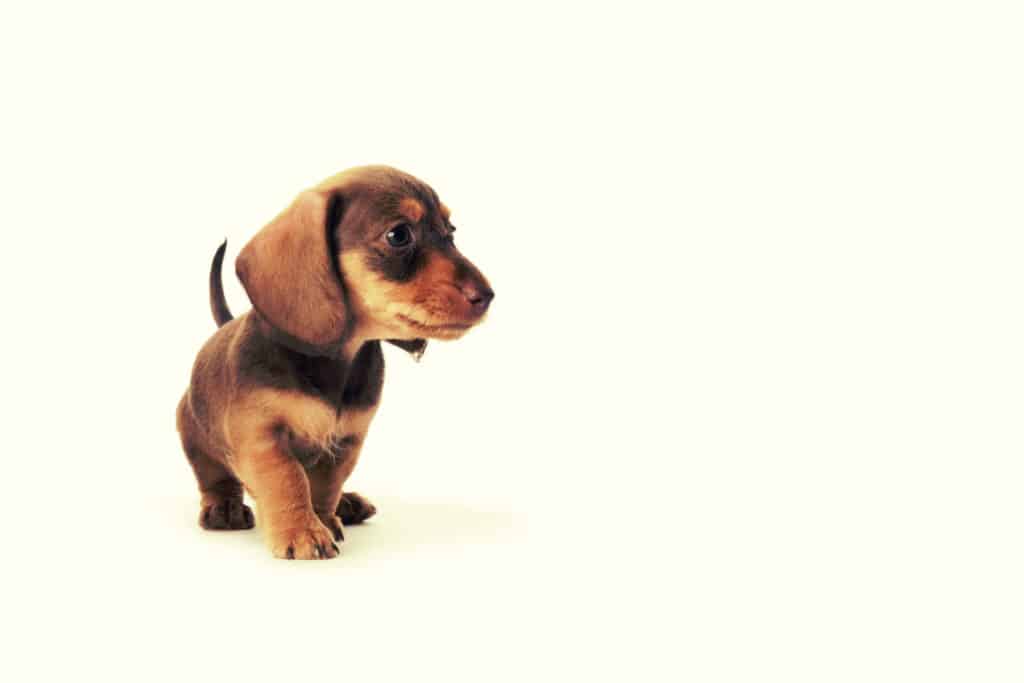| Type | – | Hound |
| Height | – | 33 – 37 cm (13 – 14.5 inches) |
| Weight | – | 16 – 32 pounds (7 – 14 kg) |
| Family | – | Tahitian Dog |
| Origin Area | – | Germany |
| Origin Year | – | 1500s |
| Also Known as | – | Badger Dog, Teckel |
| Life Span | – | 12 – 16 Years |
Table of Contents
History of Dachshund Breed
This breed was created in the 15th century in Germany. At first, Dachshund doggos were used for hunting animals. Smaller Dachshunds which were weighted about 12 pounds, were used for hunting hares and weasels. Bigger Dachshunds that were weighed about 30 to 35 pounds were used for hunting deer and foxes.
In Germany, this breed was known as “Teckel.” Later, the Dachshund breed was polished by German foresters in the 18th and 19th centuryies. Their goal was to create a dog breed that was fearless and would fight badgers to the death if necessary. They also wanted that dog breed to be elongated so it could dig into badger burrows.
In the modern world, this carefully created Dachshund is the only dog breed that is recognized by the American Kennel Club that has the ability to hunt both above and below ground.
In the late 1800s, Dachshunds were bred as pets more than as hunters, mostly in England. At the time, Queen Victoria was especially fond of this breed, and then a trend was created, and the popularity of this dog breed rose around all over Europe. Then finally, a smaller version of Dachshund was created.
In the 1950s, the Dachshund breed became one of the most popular family dogs in America. In the modern world, this breed is famous all around the world as a loyal pet and as a good companion.
Behavior
This breed is a bit stubborn. But also, they are very clever and active. They are also very loyal and affectionate, even for little kids. Dachshunds also require a lot of attention, so they love cuddling.
Just like other dog breeds, Dachshunds also should be socialized from an early age. This would help them become well-behaved doggos when they become adults. Training can also be started from an early stage for them since they are clever. Potty training is also easy with Dachshunds.

Care
Since this breed is very active, they require a lot of daily exercises. Two half-mile walks a day would be ideal for them (10 minutes each). If that’s not possible, then playing fetch will give them proper exercises.
Proper training will do lots of good for Dachshunds. Otherwise, they can get obese. So, how to build muscles in your dog always comes in handy if you have a Dachshund puppy.
Remember to use positive reinforcements when training your Dachshund puppy as giving treats and giving them more attention since they respond well to positive reinforcements. Keep in mind that this breed can get bored quickly. So, don’t do the same activity for too long.
Also, keep in mind that Dachshund doggos can become a bit noisy. So if you are living in an apartment community or in a condo, that can become an issue.
The recommended amount of daily food is about ½ to 1 ½ cups of best quality dry dog food. But consult with your vet about the diet since it can vary depending on the dog’s weight and other health issues.
Since they have a short and shiny coat, heavy grooming is not required. Brush them about 2 or 3 times a week and bath them once a month. Brush their teeth at least 2 times a week. If you can brush it daily, then that’s even better. When it comes to nails, you have to trim them at least once per month. Introduce your pup to nail trimming at an early age. Then they will get used to it. Otherwise, trimming their nails can be a really tough task.
Health Issues
There are a couple of health issues you have to be concerned about if you have a Dachshund puppy.
- Obesity – Dachshunds can easily get obese. So a strict diet is good for them.
- Hip Dysplasia – Dachshunds are vulnerable to Hip Dysplasia because of their elongated build.
- Knee Dislocation – They are vulnerable to knee dislocation also because of their elongated build.
- Eye Conditions – Dachshunds can get eye conditions such as glaucoma and cataract, so keep an eye out for them.
- Intervertebral (back) disc disease – Dachshunds are prone to this because of their elongated build.
- Skin Problems – They are proneto skin issues like Flea allergy dermatitis and color dilution alopecia.
If you see these medical issues on your Dachshund doggo, you should take your dog to a vet.
FAQ
- How much does a Dachshund puppy cost?
On average, a Dachshund puppy is cost around $500 – $1000. But their maintenance cost is very low compared to other dog breeds since they are a low maintenance dog breed.
- Can Dachshunds be left alone?
You can leave your adult Dachshund doggo for 4 hours max at a time. If you leave them alone for more than that, then that can cause them anxiety and other problems.


